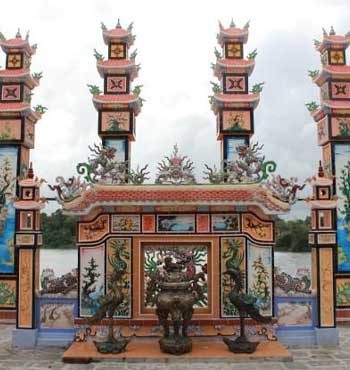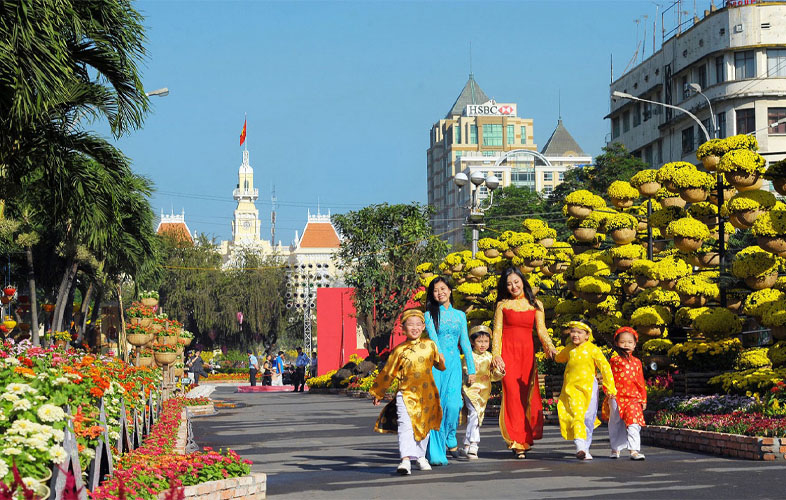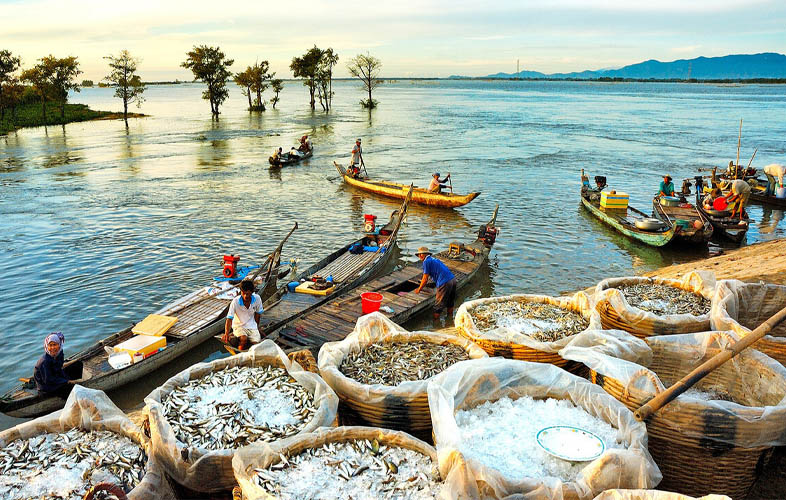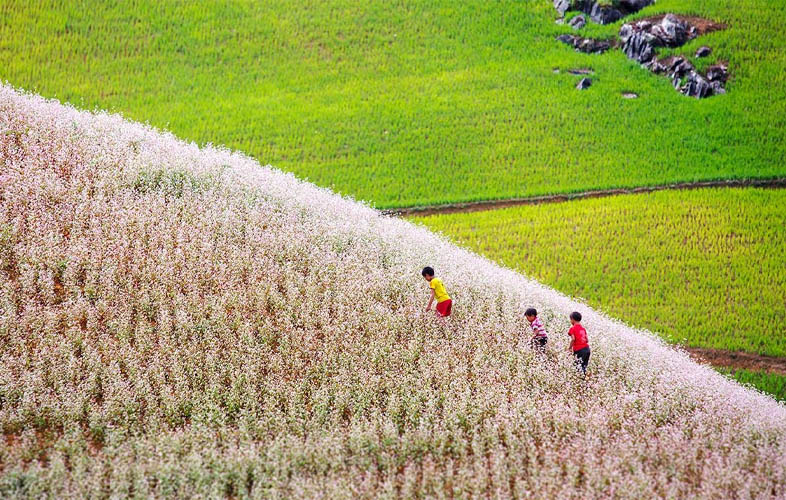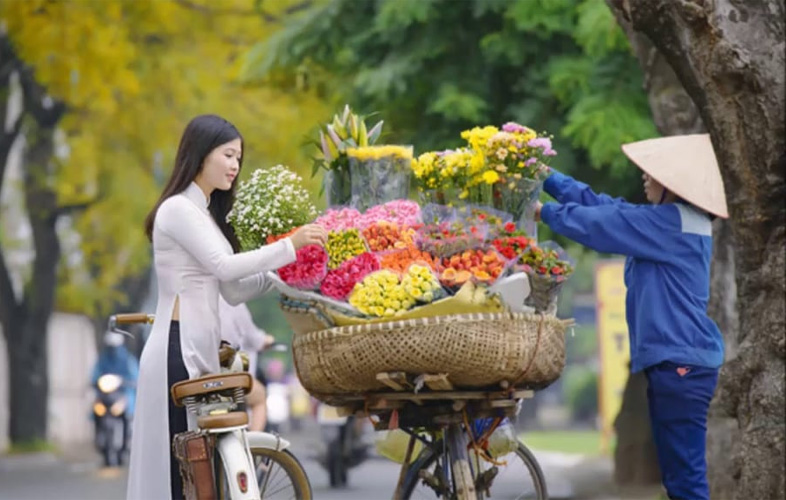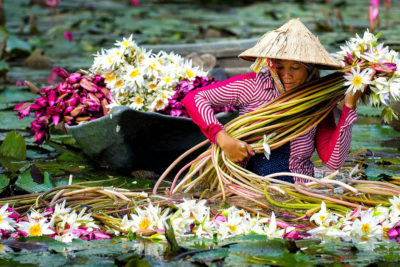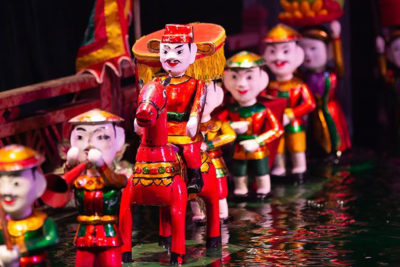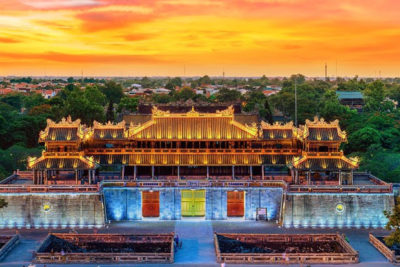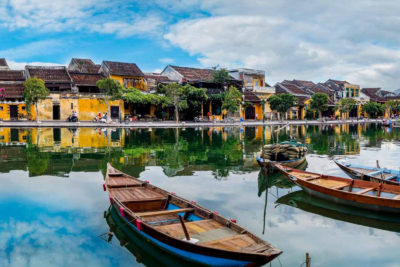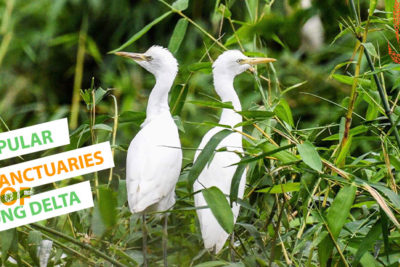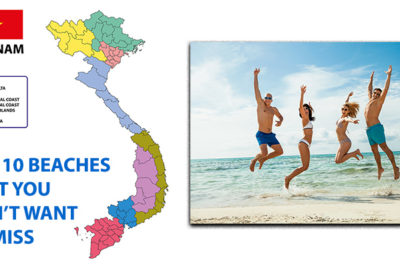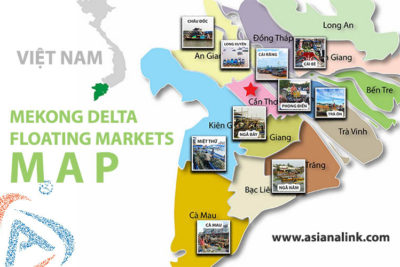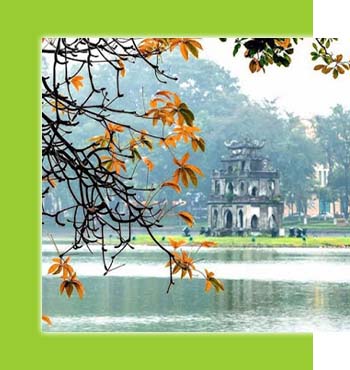
BEST TIME TO VISIT VIỆT NAM
There’s no wrong time to visit Việt Nam. The country has a tropical monsoon climate, with the south or southwesterly monsoon dominating from May to September and the northeast monsoon from October to April.
If you intend to see a bit of everything, you need to work around the regional weather differences. Overall, autumn (September to December) and spring (March and April) are probably the most favorable seasons if you’re planning to cover the whole country.
VIỆT NAM WEATHER
Figure out the best time to visit Việt Nam depends on which parts of the country you want to visit.
Northern Việt Nam
There are two distinct seasons. It’s hot from May to October, but the high humidity leads to significant rainfall. The weather cools down from November to April and it’s much drier. December and January are the coldest months – temperatures drop as low as 10°C in most areas.
Central Việt Nam
Central Việt Nam’s summer season lasts from January until the end of August. The weather is hot and dry, with temperatures between 21°C and 35°C. Conditions between September and December are much wetter, although temperatures remain balmy.
Southern Việt Nam
Southern Việt Nam’s hot and dry season starts in November and finishes at the end of April, with temperatures often reaching 30°C. Rain falls between May and October, but the weather still remains warm, usually between 25°C and 32°C.
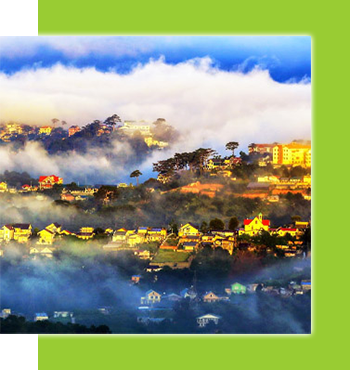
Việt Nam Climate Guide
| Destination | Jan | Feb | Mar | Apr | May | Jun | Jul | Aug | Sep | Oct | Nov | Dec |
|---|---|---|---|---|---|---|---|---|---|---|---|---|
| Con Dao Islands | 28°C 15mm | 28°C 4mm | 30°C 9mm | 31°C 44mm | 31°C 223mm | 31°C 298mm | 30°C 264mm | 30°C 320mm | 30°C 327mm | 29°C 293mm | 29°C 183mm | 28°C 56mm |
| Halong Bay | 21°C 18mm | 20°C 36mm | 23°C 39mm | 27°C 71mm | 31°C 159mm | 32°C 203mm | 32°C 292mm | 32°C 323mm | 31°C 321mm | 29°C 90mm | 26°C 38mm | 22°C 18mm |
| Hanoi | 20°C 16mm | 21°C 30mm | 23°C 38mm | 28°C 87mm | 32°C 196mm | 33°C 241mm | 33°C 309mm | 32°C 334mm | 31°C 253mm | 29°C 117mm | 26°C 40mm | 22°C 20mm |
| Hoi An | 25°C 97mm | 26°C 39mm | 28°C 30mm | 31°C 31mm | 33°C 54mm | 34°C 89mm | 34°C 72mm | 34°C 113mm | 31°C 327mm | 29°C 532mm | 27°C 388mm | 25°C 214mm |
| Hue | 24°C 164mm | 25°C 74mm | 27°C 92mm | 30°C 51mm | 33°C 106mm | 34°C 81mm | 34°C 81mm | 34°C 116mm | 31°C 364mm | 29°C 612mm | 26°C 625mm | 24°C 329mm |
| Mekong Delta | 30°C 11mm | 30°C 3mm | 31°C 10mm | 33°C 46mm | 31°C 171mm | 31°C 192mm | 31°C 218mm | 30°C 201mm | 30°C 263mm | 30°C 256mm | 31°C 146mm | 30°C 43mm |
| Nha Trang | 28°C 42mm | 29°C 15mm | 30°C 24mm | 32°C 43mm | 33°C 56mm | 33°C 45mm | 33°C 38mm | 33°C 49mm | 32°C 139mm | 30°C 292mm | 29°C 278mm | 28°C 157mm |
| Phu Quoc | 30°C 29mm | 30°C 18mm | 31°C 84mm | 32°C 142mm | 31°C 319mm | 31°C 405mm | 30°C 464mm | 30°C 620mm | 30°C 463mm | 30°C 303mm | 30°C 175mm | 30°C 55mm |
| Saigon | 32°C 13mm | 33°C 2mm | 34°C 11mm | 35°C 48mm | 33°C 214mm | 32°C 303mm | 31°C 291mm | 31°C 260mm | 31°C 316mm | 31°C 262mm | 31°C 112mm | 31°C 44mm |
| Sapa & the Tonkinese Alps | 13°C 20mm | 15°C 53mm | 19°C 57mm | 22°C 139mm | 25°C 248mm | 24°C 290mm | 25°C 451mm | 25°C 406mm | 23°C 251mm | 21°C 120mm | 18°C 18mm | 16°C 6mm |
Month-by-month guide to travel in Việt Nam
Dry and pleasant weather can be enjoyed throughout most of Việt Nam at this time of year. River travel is at its peak, with cruises along the Mekong Delta and the Red River. For the best beach weather, we recommend heading to Phú Quốc Island for guaranteed sunshine, with highs of 30°C.
However, temperatures can drop dramatically in the northern regions in January, with mornings and late evenings feeling much cooler. This is especially the case for Sapa and Hà Giang, with temperatures dropping to a cold 5°C. The air can get quite hazy at this time of year, especially in Hạ Long Bay, so you may not be guaranteed the best views.
Vietnamese people consider Lunar New Year as their official traditional New Year; they called it Tết in local language. Tết is the most important festival in Việt Nam; it occurs in late January or February. However, the celebration of New Year according to Gregorian calendar becomes popular in Việt Nam in recent years. Vietnamese people hold many interesting activities on the first day of a new year in the whole country, especially in big cities like Hà Nội, Hồ Chí Minh City, Đà Nẵng…
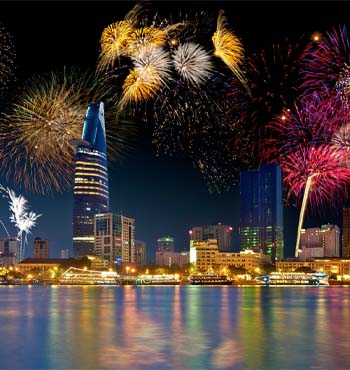
Hot, dry weather is expected throughout the majority of the country. Central Việt Nam has an average temperature of 25°C, with Hội An, Đà Nẵng and Nha Trang all excellent beach destinations. It’s cooler in the highlands, but this means conditions are more comfortable for outdoor activities like trekking.
In the south, temperatures usually approach the late twenties, with lots of sunshine throughout the day. Beachgoers have their pick of the coastal areas, including Vũng Tàu, Hồ Tràm, and Mũi Né.
North Việt Nam feels much cooler, with an average temperature of 17°C, and some of the most northern areas can get quite foggy, including Hạ Long Bay. However, the day is sunny and bright.
The biggest festival of the year is Tết – Lunar New Year. It’s seen as a fresh start, so residents declutter their houses and throw firecrackers (or make other loud noises) to scare away evil spirits. You will see lots of red and yellow in the streets, because these colours are considered good luck. There are lots of free celebrations, with traditional shows and dragon dance performances. The date varies depending on the lunar calendar, but it normally takes between late January and early February. Travel is busier at this time and many shops, restaurants and museums shut for the holiday.
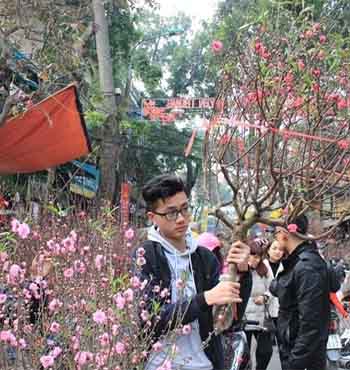
March is the peak season for travelling to Việt Nam. Beachgoers have a better choice of destinations, with Mũi Né, Côn Đảo and Nha Trang all getting good weather. Hội An is also a feasible beach destination towards the end of the month, with temperatures rising to 28°C.
March is the best time to visit Hạ Long Bay, which should have clear blue skies without haze, and very little rain.
- Buôn Ma Thuộc Coffee Festival: Caffeine cravers should make for the highlands during March, as Buôn Ma Thuộc plays host to an annual coffee festival. Growers, grinders, blenders and addicts rub shoulders in the city’s main park, and local entertainment is provided.
- Thay Pagoda Festival commemorates the life of inventor Tu Dao Hanh with a procession and water puppetry performances. It takes place in either March or April each year.
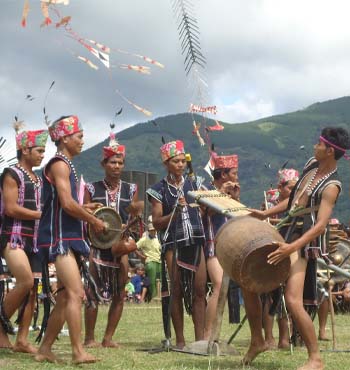
Great weather is expected almost everywhere in April, so you will notice more crowds.
The temperatures in northern Việt Nam are in the mid-twenties by this time, so conditions are still good for those who want to hike around areas like Hà Giang and Sapa, where you can walk through paddy fields and visit the traditional villages of H’mong and Dao.
Beachgoers still have their pick, with the average temperature in central Việt Nam around 28°C. In the south, temperatures are slightly higher, but there’s also a greater chance of rain.
The Hùng King Festival is a national holiday that marks the birth of the first kings in Việt Nam. People congregate at the Hùng Temple in Phú Thọ province to make offerings, and then celebrate by enjoying traditional performances.
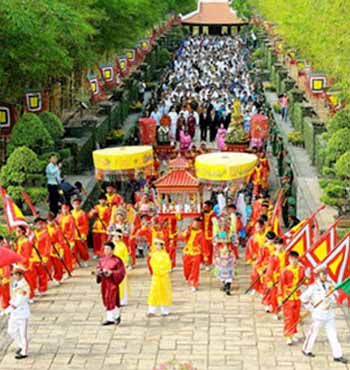
May offers a wonderful opportunity to miss the high season prices of April. It gets hot at this time of year, with temperatures reaching between 28°C and 30°C. Rain should hold off, but you may get the odd shower towards the end of the month in the northern and southern regions, normally in the middle of the afternoon.
Most of the central region stays nice and sunny, although there’s a chance of rainfall in the Central Highlands and Đà Lạt.
Bà Chúa Xứ Temple Festival is hold annually from the 23rd day to 27th day of the fourth lunar month, in Sam Mountain, Châu Đốc. Bà Chúa Xứ Temple Festival is a unique religious and cultural activity of not only An Giang people but also the whole Mekong Delta region. This long-lasting folk festival contributes to enrich the socio-cultural and spiritual life of locals.
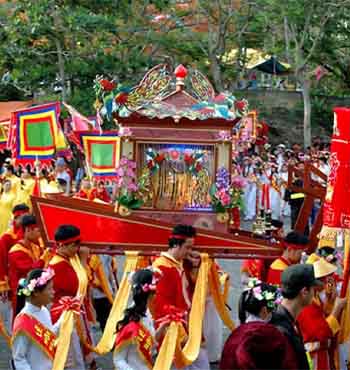
June is the perfect time to grab a low-season bargain before the European school holidays begin next month.
The best place to be in June is the central region, where the sun is out in full force. Very little rain is expected, and Hội An serves as a lovely beach destination.
Temperatures in the north are in the early thirties, with regular rainfall and occasional storms meaning trekking is no longer an option, especially not in the mountains.
It rains daily in the south in June, but not for prolonged periods.
If you have a chance to visit Việt Nam this lovely summer month, do not feel annoyed by the hush-and-rush atmosphere around the local markets or get surprised by the appealing delicious as summer lychees and odd-looking purple rice that a random local/ shopper offer you while visiting their houses/shops. At mid-June, Vietnamese people usually celebrate “Tết Đoan Ngọ” (Đoan Ngọ Festival) as one the most essential holidays along with “Tết Nguyên Đán” and “Trung Thu” (Mid-Autumn Festival) but without dynamic village activities or festive rites usually seen in agricultural countries.
On this day, farmers remove insects and pests from crops and greens while families prepare special kinds of food and unique ceremonies. In spite of common tradition, the diversity in celebration approach is well-reflected within each region of Việt Nam.
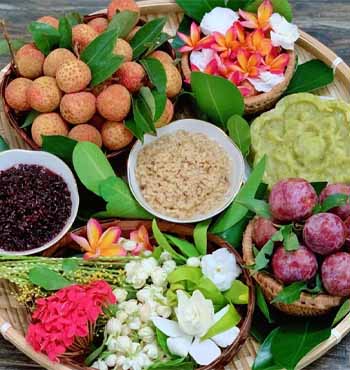
Central Việt Nam is an ideal destination in July, with temperatures of 31°C, hours of sunshine and little rain. The beaches remain pleasant places to spend time on your trip, although the Central Highlands and Đà Lạt are best avoided due to the higher volume of rain.
The rest of Việt Nam will experience some showers, especially Hà Nội and Hạ Long Bay. But it’s still hot, with average temperatures of 30°C in the north and 29°C in the south.
There are no national holidays in July, but visitors still can find some local festival along Việt Nam, such as: Ông Pagoda Festival in Hồ Chí Minh City, Quan Lạn Festival in Quảng Ninh Province, Chi Long Village Festival in Huế…
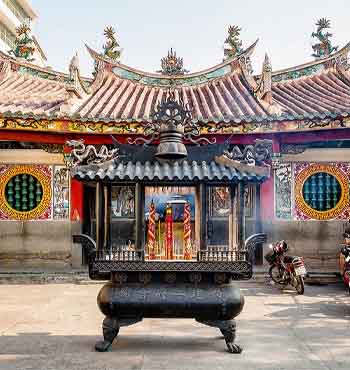
Central Việt Nam is the best place to visit at this time of year; although the rest of the country is still worth visiting providing you don’t mind a few showers. Temperatures are reliably warm no matter where you go.
While flights may be more expensive, hotels offer great promotions during Việt Nam’s low season. And if you go to the Côn Đảo coastline, you have the chance to see sea turtles hatching and making their way to the ocean.
Wandering Souls Day (Trung Nguyen)
Second in the pecking order to Tết is this ancient Vietnamese tradition. Huge spreads of food are left out for lost spirits who, it’s believed, wander the Earth on this day. Held on the 15th day of the seventh moon.
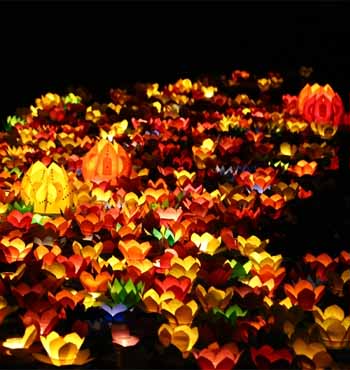
Catch the last of the sun on Việt Nam’s central coast before the rains become more frequent towards the end of September. Temperatures start to drop (although they still reach the late twenties on average) and storms are far more likely to occur.
The north and south are usually very wet at this time of year, but the hotels are good value and the rains slowly start to ease off before the end of the month.
- Mid-Autumn Festival is on a different date every year, but always on the full moon between September and October. It’s a harvest festival that celebrates gathering, thanksgiving, and praying. Dragon and lion dances are performed, lanterns are lit, and children are gifted with sweets and toys.
- Việt Nam National Day takes place on 2nd September. It’s a national holiday commemorating the Việt Nam Declaration of Independence from France in 1945. This patriotic day is celebrated with a parade through the capital of Hà Nội.
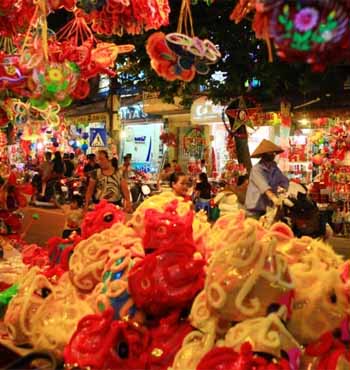
Beach holidays aren’t a good idea in October, but Việt Nam has so much else to offer, and travelling at this time means you beat the crowds.
The sun comes back to the north of the country, making it a great time to trek in Sapa, see the rice fields in Mù Cang chải, or venture off the beaten track in Hà Giang, where you can enjoy Việt Nam’s natural beauty. The south also sees a reduction in rainfall, and the sun starts to come out again.
Peak rainfall occurs in central Việt Nam and heavy storms are a possibility. Some areas may also get flooded. Temperatures are slightly lower, normally around the mid-twenties.
Thầy Thím Temple Festival is a traditional cultural folk festival annually organized at Thầy Thím temple – a cultural and historical event to commemorate merit and virtue of ancestors through the past 150 years.
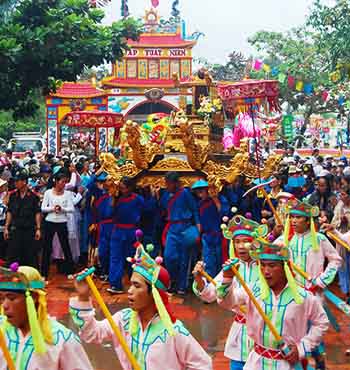
The high season begins again, with many travellers flocking to Việt Nam before the colder winter months in the north. Most of the country will be hot and dry towards the end of November, except the central region, which will experience some heavy showers.
The north remains at a very pleasant 24°C, with a significant reduction in rainfall, while the south begins its summer season again. The drop in humidity means conditions are far more comfortable and the sun shines brightly all day.
The Khmer in Việt Nam’s southern region are celebrating the Ok Om Bok or Moon Worship Festival. After the harvest, they hold the Ok Om Bok Festival to honor the Moon, a supernatural power, for protecting their crops, regulating the weather, and blessing them with fruitful crops and prosperity.
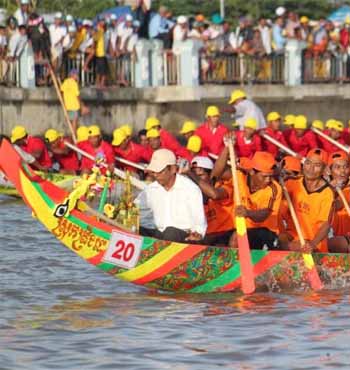
There is still a chance of rain in the central part of the country. However, the rest of Việt Nam will be hot and dry. December is one of the driest months in the north, although temperatures can drop at night. They reach an average of 26°C in the balmy south, with beach season starting again on the island of Phú Quốc.
We advise travelling before the Christmas period, as availability is few and far between once the festivities begin.
Phú Lễ Communal House Festival in Bến Tre Province. Every year, the festival at Phú Lễ communal house is held twice: Kỳ Yên festival on 18th and 19th of March whishing for favorable weather condition and Cầu Bông festival on 9th and 10th of November wishing for good harvest.
